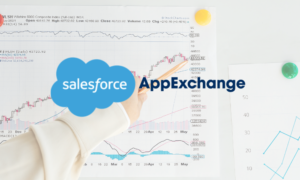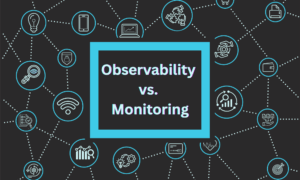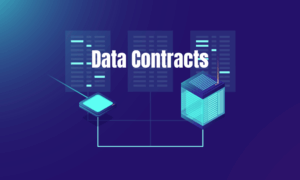Welcome to the brand-new episode of ExtraMile by HiTechNectar, where we spotlight the top leaders in tech! We’re here to wire our audience up with insights from innovators who genuinely make a difference in today’s digital era!
For today’s session, we’re eager to be joined by Emma McGrattan, Chief Technology Officer at Actian, a pioneer in data management and data intelligence for over 50 years. Actian empowers enterprises to transform complex data landscapes into AI-ready assets through its standout Data Intelligence Platform.
Emma McGrattan, a tech visionary and advocate for women in tech, has been the backbone of leadership in technology, strategy, innovation, and product development at Actian.
Join us for this discussion as Emma takes us through perspectives on Actian’s data intelligence platform, simplifying hybrid and multi-cloud environments, thoughts on AI, governance-by-design approach, and more.
Welcome, Emma. We’re so excited to have you here today!
Q1. You’ve been with Actian for over three decades, indeed, that’s incredible! How has the company’s overall technology strategy progressed during that time, and what has been your role in shaping it?
Emma. My journey from Actian engineer to CTO has been one of constant evolution. I joined the Dublin team on December 7, 1992, working on Ingres at the height of the client-server revolution. Today, I’m helping lead our teams through another transformation—reimagining how businesses unlock value from data with AI.
Over three decades, I’ve helped steer Actian’s journey from database pioneer to cloud data management leader, spanning analytics, integration, and core data platforms. My role in shaping our technology strategy has always been anchored in one conviction: data intelligence isn’t an add-on—it must be governed, trusted, and embedded into the fabric of every organization. In the AI era, that belief matters more than ever: you can’t have responsible AI without trusted data, and you can’t have trusted data without governance.
That philosophy underpins the Actian Data Intelligence Platform, which delivers AI-ready data through governance by design, automated data contracts, observability, and a federated knowledge graph. As AI takes center stage, the margin for error has never been smaller. Responsible AI is only possible with trusted data—and trusted data requires both governance and a strong data culture to be built in from the start.
What excites me most today is enabling customers to use all their data with confidence—including the “crown jewels” of sensitive customer information they’ve often kept off-limits—because they know it’s governed, trustworthy, and fit for purpose.
Q2. Your advocacy for women in tech is impressive! What progress have you seen in building inclusivity in the industry, and what more stands ahead?
Emma. The statistics are sobering: women comprise only 29% of CXO positions globally, shrinking to 20% for CTOs specifically. As one of those few women CTOs, I feel a deep responsibility to help change that reality.
That’s why I work directly with organizations like Lesbians Who Tech + Allies and Black Girls Code to open doors through mentorship and support. I’m also proud to serve as executive sponsor for HCLTech’s Pride Employee Resource Group, helping shape a workplace where everyone feels empowered to bring their authentic selves to work. At Actian, we’re bucking the trend with women in senior roles including our Chief Marketing Officer, Senior Vice President of Customer Success, and Senior Vice President of Renewals Sales.
Inclusion doesn’t happen by accident it requires intention and daily commitment. I’ve long been an advocate for LGBTQ+ rights and gender equity because I’ve seen firsthand that diversity of perspective drives better solutions, stronger teams, and more resilient innovation.
Looking ahead, I want to continue building pathways for underrepresented groups so that the next generation of leaders faces fewer barriers and more opportunities to thrive.
Q3. Could you highlight the differentiating factor in Actian’s Data Intelligence Platform? How does it outperform the other leaders in the cloud data and analytics market?
Emma. The true differentiator of the Actian Data Intelligence Platform is that we’ve made data intelligence usable for everyone—not just the technical elite. Where many competitors struggle with adoption because of complexity, we’ve focused on radical simplicity: think of it as Google search for your enterprise data ecosystem.
At the core is a federated knowledge graph that maps data relationships and traces how information flows across the organization. This isn’t about showing off technology—it’s about creating confidence. When people can see a dataset’s full journey from origin to use, they trust it enough to make business-critical decisions with it.
What makes this possible is our “governance by design” approach. We embed oversight and documentation from the very start of the data lifecycle. Automated scanners and APIs harvest metadata continuously, keeping pace with change and ensuring that governance is never an afterthought.
Architecturally, we’ve struck the balance between sophistication and accessibility. Features like federated architecture, automated metadata management, and end-to-end lineage are delivered in an interface that doesn’t demand deep technical skills to use. That combination—enterprise-grade power without enterprise-grade barriers—is what truly sets us apart.
Q4. Emma, from your perspective, what are the biggest setbacks enterprises face today in managing hybrid and multi-cloud environments?
Emma. The biggest setbacks enterprises face in hybrid and multi-cloud environments come down to one thing: complexity without control. Too many platforms, too many silos, and not enough governance.
AI-Ready Data: Enterprises want to move fast with AI, but without a clean and trusted foundation, every initiative is at risk. When data is fragmented across on-prem, private, and multiple public clouds, quality and trust take a hit. You can’t deliver AI at scale if you can’t rely on the data underneath it.
Governance and Compliance: With data spread everywhere, most organizations lose the ability to see end-to-end lineage. Each environment has its own controls and compliance frameworks, which makes it nearly impossible to enforce consistent policies or prove continuous compliance. That’s why governance by design—and approaches like data contracts and federated knowledge graphs—are becoming essential.
Operational Integration: Different APIs, formats, and proprietary tools create barriers that slow teams down and introduce inconsistencies. And there’s a skills gap—few organizations have the expertise to manage hybrid and multi-cloud well. Building a strong data culture and automating observability are critical to closing that gap.
At the end of the day, hybrid and multi-cloud should give enterprises flexibility and resilience. But without governance, it just adds complexity. My focus has always been making sure data remains trusted, usable, and AI-ready no matter where it lives.
Q5. Actian has been around for over 50 years, that’s indeed a great legacy. Considering this, how has the constantly pushing boundaries of growth to stay ahead of the AI landscape?
Emma. Staying ahead in the AI landscape starts with solving one of the hardest, most fundamental problems: making enterprise data accessible and trustworthy through natural language. For too long, working with data meant writing SQL, learning complex tools, or relying on specialists. In an AI-driven world, that’s simply not good enough.
One of the biggest blockers is the semantic layer. Built manually, it’s slow, brittle, and never truly complete. That’s why our focus at Actian is on an automatically generated semantic layer, powered by governance by design, metadata harvesting, and federated knowledge graphs. It’s what allows business users to ask questions in plain language and get complete, governed answers—with context, visualizations, and trends—without needing technical expertise.
But accessibility alone isn’t enough. This data has to flow directly into existing AI workflows. People shouldn’t have to leave their agent or disrupt their process to get at enterprise data. Our vision is to bring governed, trusted data directly into the AI agents and copilots they already use, so every decision is grounded in reliable information.
By embedding governance into the fabric of data access—and eliminating barriers to how people interact with it—we’re helping enterprises unlock the real potential of AI: decision-making with confidence, at scale, across all their data.
Q6. With 25 of the Fortune 100 working with Actian, what industries or use cases stand out as the most impactful?
Emma. With 25 of the Fortune 100 working with Actian, the industries and use cases that stand out most are those where speed, security, and regulatory compliance are table stakes — sectors such as financial services, healthcare & life sciences, manufacturing and utilities.
In financial services, institutions face intense regulatory pressure around data privacy and reporting requirements like GDPR and BCBS 239. They must maintain full data lineage and governance while driving digital transformation. Actian delivers a trusted foundation across that spectrum.
In healthcare and life sciences, the stakes are equally high. Organizations manage highly sensitive patient data across complex provider networks. They need governance frameworks aligned with HIPAA, and at the same time support data-driven initiatives like precision medicine and clinical research — often across global operations and large datasets.
In manufacturing, the rise of IoT devices and sensors has generated a massive influx of operational data. These companies need to catalog, contextualize and govern that data for production optimization, quality control, and predictive maintenance across global supply-chains. Actian supports edge-to-cloud analytics, hybrid deployments and trusted data in those environments.
One of my personal favorites is the case of GEMA, Germany’s music-rights organization, managing 30.1 million songs. Using Actian’s metadata catalog, they launched 250+ data products, boosted analyst productivity by 25%, and ensured €1.0 billion in fair revenue distribution to creators. That’s a vivid example of how trusted data + governance + amplification of value come together.
Q7. You are known for your expertise in data architecture and query optimization. What innovations in these areas are most exciting to you today?
Emma. What excites me most right now isn’t just query optimization or architecture in the traditional sense — it’s rethinking how those disciplines evolve to support AI at enterprise scale. Gartner predicts that over 40% of agentic AI projects will be abandoned by 2027 because pilots don’t translate into production. I see that risk every day.
The problem is that AI agents don’t behave like humans. They consume data continuously, make autonomous decisions, and can spread data quality issues at machine speed. The guardrails we built for human users — roles, permissions, approval workflows — simply don’t hold up when agents are operating independently across multiple data sources.
To solve this, we need a new governance and access framework built for machines as well as people. That means:
- Machine-readable data contracts that agents can automatically verify before they ever touch a dataset.
- Intelligent gateways — like Model Context Protocol servers — that standardize and secure how agents connect to data sources.
- Self-service marketplaces where agents can autonomously discover and evaluate governed data products.
This isn’t theory—it’s the foundation we’re embedding into the Actian Data Intelligence Platform. Organizations that start designing for this now will be the ones who can scale AI responsibly, with trust and value intact, across the enterprise.
Q8. Actian emphasizes transforming complex data landscapes into AI-ready assets. Could you walk us through the process of how this transformation takes place in practice?
Emma. Transforming complex data landscapes into AI-ready assets always starts with visibility. You can’t govern or prepare data you can’t see. That’s why our platform uses automated scanners and APIs to harvest metadata across the enterprise, giving a complete picture of the data landscape, no matter where it lives.
The next step is governance by design. Instead of trying to bolt governance on afterward, we embed it directly at the source with data contracts that capture structure, quality rules, and usage policies. That way, data is documented and governed from the moment it’s created all the way through to consumption.
From there, we move to contextualization using a federated knowledge graph. It’s not just about knowing what the data is, it’s about understanding how it relates to other data, where it came from, and whether it can be trusted. That context is exactly what AI needs to generate reliable insights.
Finally, we make data accessible through automated semantic layers. These allow both humans and AI agents to interact with data in natural language — asking questions and getting answers enriched with visualizations and trends, without requiring technical expertise.
The outcome is data that’s discoverable, trustworthy, and truly AI-ready so enterprises can innovate with confidence.
Q9. As CTO, how do you align Actian’s tech innovation with its mission to simplify data connectivity, management and analysis. How do you ensure this approach meets the compliance needs of regulated industries like BFSI, pharma, and healthcare?
Emma. At Actian, our mission to simplify data connectivity, management, and analysis drives every technical decision we make. For us, simplification doesn’t mean stripping away capability—it means removing unnecessary complexity so customers can focus on outcomes instead of fighting their tools.
This becomes especially critical in regulated industries like BFSI, pharma, and healthcare, where AI is both a driver and a challenge for governance. AI raises the stakes: it can’t function responsibly on poorly governed data without magnifying risk. But at the same time, it makes the business case for governance stronger than ever—because organizations that get it right gain the confidence to use AI across even their most sensitive data.
That’s why our innovation roadmap is grounded in governance by design. We embed compliance into the fabric of the data lifecycle with machine-readable data contracts, automated lineage capture, continuous metadata harvesting, and federated knowledge graphs that give enterprises end-to-end visibility. These aren’t abstract concepts—they’re the exact capabilities our customers in financial services, healthcare, and manufacturing tell us they need to meet audits, prove continuous compliance, and still move fast enough to stay competitive.
For me, the bottom line is simple: innovation that doesn’t scale trust and compliance isn’t innovation—it’s just complexity in disguise. Our role as a partner is to deliver the foundations—trusted, governed, AI-ready data—so enterprises in even the most regulated industries can innovate with confidence.
Explore Our Other Insightful Interviews:





















